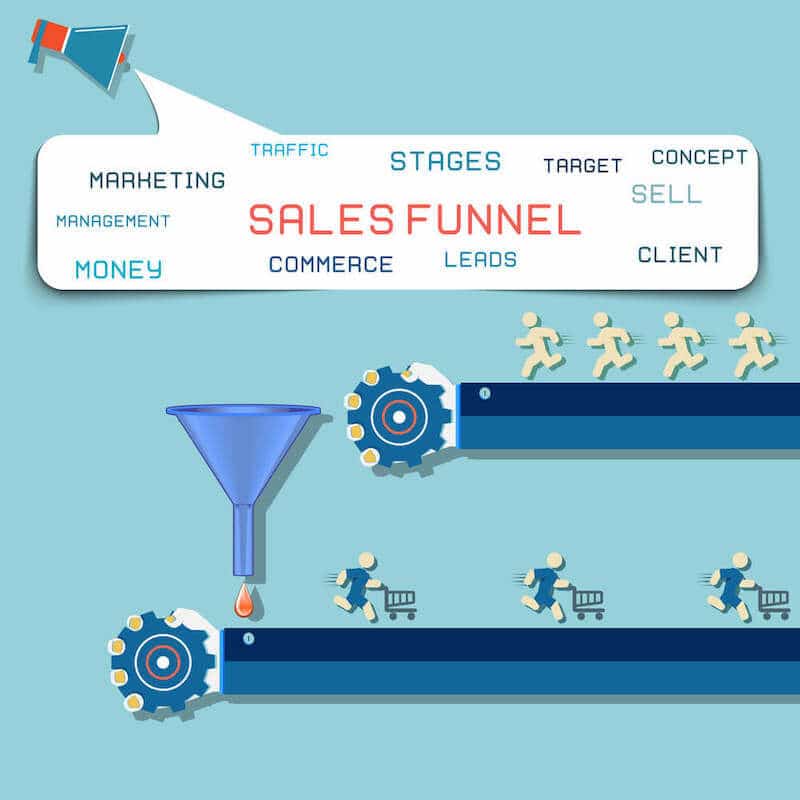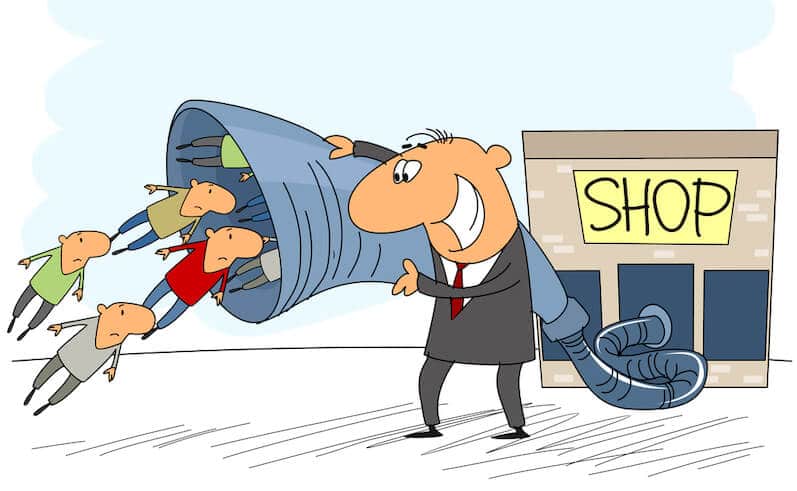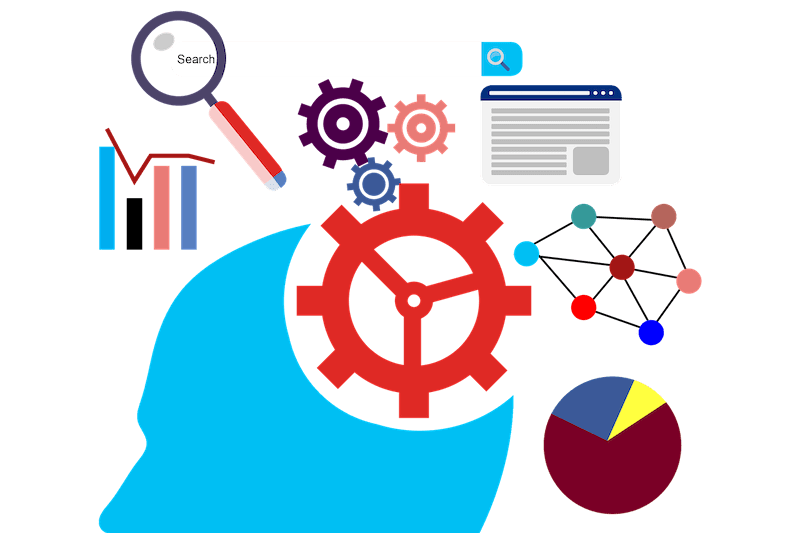What is a Digital Marketing Funnel and How Can You Create Your Own?
It’s not a secret that businesses need to focus on digital marketing to succeed.
But, knowing just where to start in the marketing process can feel like a daunting task, especially if you’re new to the world of marketing.
To succeed in digital marketing, one of the first things you should do is create a digital marketing funnel.
By creating a digital marketing funnel, you create a process that allows you to acquire new customers who previously never even heard of your business.
But, just what is a digital marketing funnel? And how do you create one?
Check out this guide to learn everything you need to know about digital marketing funnels.
What is a Digital Marketing Funnel?
Let’s start with the basics and break down what exactly a digital marketing funnel is.

If you’ve never heard of a digital marketing funnel before, don’t sweat it. Learning the process of funneling your marketing is actually super simple and straightforward. And, once you know how to do it, you have a strategy in place that will help you attract new customers for the lifespan of your business.
A digital marketing funnel is essentially a way of breaking down the customer journey. This journey begins at the awareness stage (when a customer first learns about your business) and goes all the way to the purchase stage (AKA, when a customer is ready to buy your product or service).
The framework of a digital marketing funnel is based on the idea that the number of people you attract to your website is much larger than the number of people who become paying customers.
In other words, the strangers slowly funnel out until what you’re left with is a handful of quality customers.
Now, it’s very important to understand that a digital marketing funnel has three parts: the top of the funnel, the middle of the funnel, and, you guessed it, the bottom of the funnel.
Let’s inspect each part of the funnel.
Top of the Funnel
The top of the funnel is where you take a potential customer who does not understand your brand or service and show them what it is you offer.
You can show them what you have to offer in several or more ways: through advertising, social media platforms, local events, branding campaigns and more.
Here are some ways you can create awareness at the top of the funnel:
- Create an email list: Begin a series of emails to engage potential customers with your brand
- Create a landing page: This is a page that your customers will “land on” when they click on an ad or promotion
- Offer lead magnets: These are pieces of information that you offer your potential customers in exchange for their email address
By doing all of this, you’ll attract numerous people to your brand. Now, as we said earlier, these people won’t all turn into paying customers. In fact, a good amount of them will filter out in the middle of the funnel. Let’s look at what happens there…
Middle of the Funnel
At the middle of the funnel, you take customers from having a slight awareness of your business to having an actual interest in your business.
At the top of the funnel, you just want customers to recognize your business and know the basics of what you’re about. In the middle, you want them to become interested in learning about your products and services.
To gain curiosity from potential customers, here’s what you can do in the middle of the funnel:
- Send email sequences: With an email sequence, you send out a series of emails to your potential customers. These emails aren’t random, they should target them based on the specific customer’s demographic
- Advertise: Advertise both on social media and on websites that your customers frequent
- Track behavior: You can use a behavioral tracking tool that allows you to see whether your potential customers have opened up your emails or downloaded your freebies
By introducing a potential customer some free content, you’re able to show them the value your product or service has to offer. This can help take customers from the middle of the funnel to the bottom of the funnel.
Bottom of the Funnel
The bottom of the funnel is where customers do business with your brand.
This is where sales conversions occur. You’ll use these conversions to measure the overall success of the funnel.
Here’s how to make sure conversions happen at the bottom of the funnel:
- Use A/B testing tools: A/B testing tools will let you see what elements of your landing page work and which ones don’t. The elements you need to change could be a piece of text, an image, or even a free offer
- Use heat mapping tools: This tool creates a virtual map that allows you to see where visitors to your landing page spend their time
- Use conversion optimization tools: This tool allows you to optimize those who enter your funnel
By using these tools, you’ll hopefully be able to convert potential customers into real customers.
Creating a Digital Marketing Funnel
Now that you know how a digital marketing funnel works, let’s dive into the specifics of creating one.
Here’s what you need to do:
1. Decide What You’ll Offer
At the start, you need to decide what product or service you’ll offer customers when they reach the end of the funnel.
This decision will help you create the rest of your funnel, so don’t skip it.
When deciding what to offer your customer, it’s important to know the basic elements of what you’re offering. Here’s what you should ask yourself:
- What payment method can customers use to purchase my item?
- What format does my item come in? (Physical, digital, etc)
- How will it be delivered? (downloadable, shipped, etc)
- What is everything that will be included in my product?
2. Create a Free Offer

We all love free stuff, and that’s why you need to create a free offer for your customers.
The purpose of a freebie is to grab the attention of a customer so they move further along in your sales funnel.
The freebie should provide value to the customer that they can’t get anywhere else, and it should offer a solution to a particular problem.
3. Write an Automated Email Sequence
Once your customers sign up for their freebie, you’ll want to write a sequence of automated emails that will be delivered to the customer over the next couple weeks.
The first email should welcome the customer, the next should show the customer what unique value your product offers, and the next should show proof of that value. Then, send an offer or sales email, and finally, a reminder email.
4. Sign Up for an Email Provider
Signing up for an email provider will help you created targeted emails to potential customers.
5. Building a Landing Page
When a customer first clicks on your ad, they’ll be taken to a landing page.
A successful landing page will include the following elements:
- A clear title of the free item you’re offering
- A few benefits of your freebie
- Eye-catching, but simple graphics
- A place for the customer to enter their email
- Just a few sentences of text
6. Connect All Elements of Your Digital Marketing Funnel
To make sure everything happens in the right order, you need to connect each element of your marketing funnel.
You’ll need to connect your email service provider to your landing page, and you must add in any necessary code to track your landing pages.
7. Test Out Your Funnel
Before opening your funnel to the public, test it out yourself to see if it works.
Enter your own email address into your landing page and make sure you get all the emails in the correct sequence.
8. Drive Traffic to Your Landing Page
Now that you know everything works properly, it’s time to drive traffic to your landing page.
You can drive traffic to your landing page through:
- Social media
- Q & A forums
- Subscriber incentives
- SEO (Search Engine Optimization)
- PPC
- Sponsored content
9. Build Loyalty
Gaining customer loyalty means getting your customer to understand that you offer a unique solution to their problems.
To build loyalty you should:
- Offer exclusive deals
- Send special thank you gifts/notes
- Have a rewards program to incentivize your customers
10. Test and Optimize Your Funnel
Last but not least, you’ll want to test and optimize your funnel.
This will help you increase the number of conversions your funnel creates.
You can use both A/B testing and heat mapping tools to track user engagement and improve your funnel.
Are You Ready to Create Your Digital Marketing Funnel?
As you can see, a lot goes into creating a digital marketing funnel.
But, once you see those new customers roll in, you’ll realize just how valuable it is to create a funnel.
Creating a funnel doesn’t have to be something you do on your own. Contact us today to learn how we can help you with your digital marketing funnel.
Related Articles
How to Choose the Best Digital Marketing Firm
August 27, 2019
Watch Our Video Is digital marketing for your business becoming a challenge for you? Are you getting left out on the most recent digital marketing…
2 Comments12 Minutes
Manufacturer Marketing Strategies to Consider
June 21, 2019
There’s a common belief amongst manufacturers that they have no need for an online presence. Their customers are all businesses that need someone…
0 Comments8 Minutes
What is B2B Marketing and Where is it Going?
Marketing,Digital Marketing,Business Management
June 14, 2019
What is B2B marketing? For certain companies and business owners, this will be a crucial element of their business model. It’s important to explore…
0 Comments7 Minutes
Why You Should Consider Running Marketing Experiments
Digital Marketing,Content Marketing
June 13, 2019
The world of business changes continually, and this means that business owners and marketers have to respond to new and emerging trends. Marketing…
0 Comments8 Minutes
10 Content Marketing Blogs You Should Check Out
Marketing,Content Marketing,Digital Marketing
June 8, 2019
Nowadays (mostly) everyone is on the internet. Obsessed with their mobile phones, laptops or tablets, users scroll through their social media apps…
0 Comments7 Minutes
Top 25 Best Business Marketing Ideas
Marketing,Digital Marketing,Business Management
June 5, 2019
Struggling to come up with a new marketing strategy that won’t break the bank? Here are 25 of the best business marketing ideas. 1. Send a……
0 Comments9 Minutes
7 Signs it’s Time to Switch Up Your Sales and Marketing Strategy
May 28, 2019
Watch Our Video 50% of small businesses fail after 5 years. Running a business is tough! To survive and stand out from the crowd, you need to use…
0 Comments7 Minutes
7 Hospitality Digital Marketing Trends That Every Hotel Owner Should Know
Marketing,Social Media,Digital Marketing
May 15, 2019
Watch Our Video There are over 700,000 hotels and resorts worldwide. In the United States, 62.2% of all hotels and motels are occupied at any given…
1 Comment8 Minutes
How much should my small business marketing budget be?
Marketing,Digital Marketing,Business Management
March 5, 2019
Watch Our Video Marketing budgets are one of the most debated topics in the business world. Everyone wants to know how much they should spend,…
0 Comments13 Minutes










